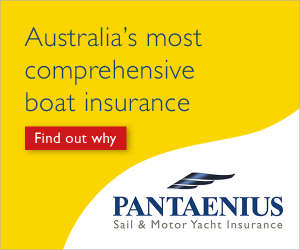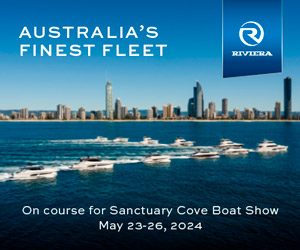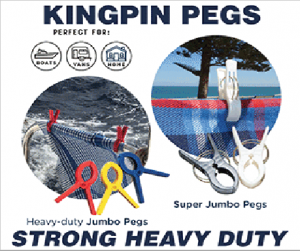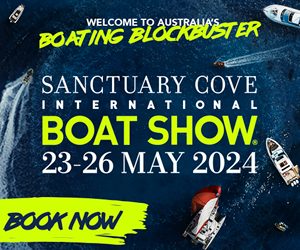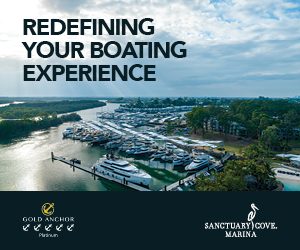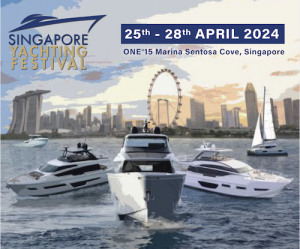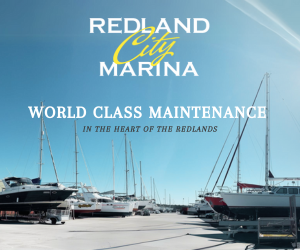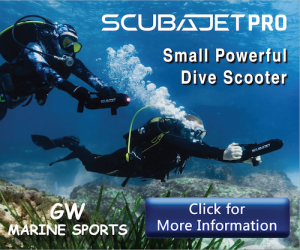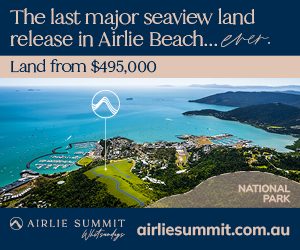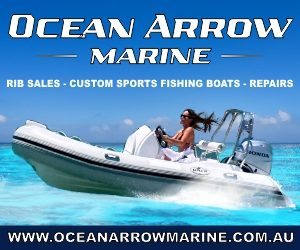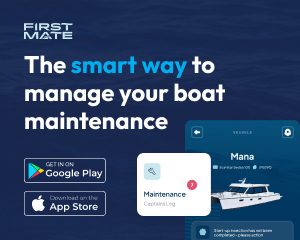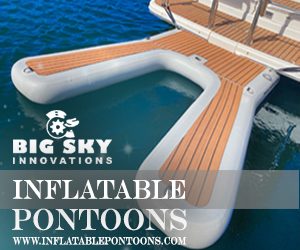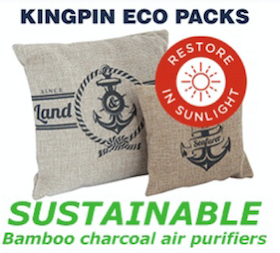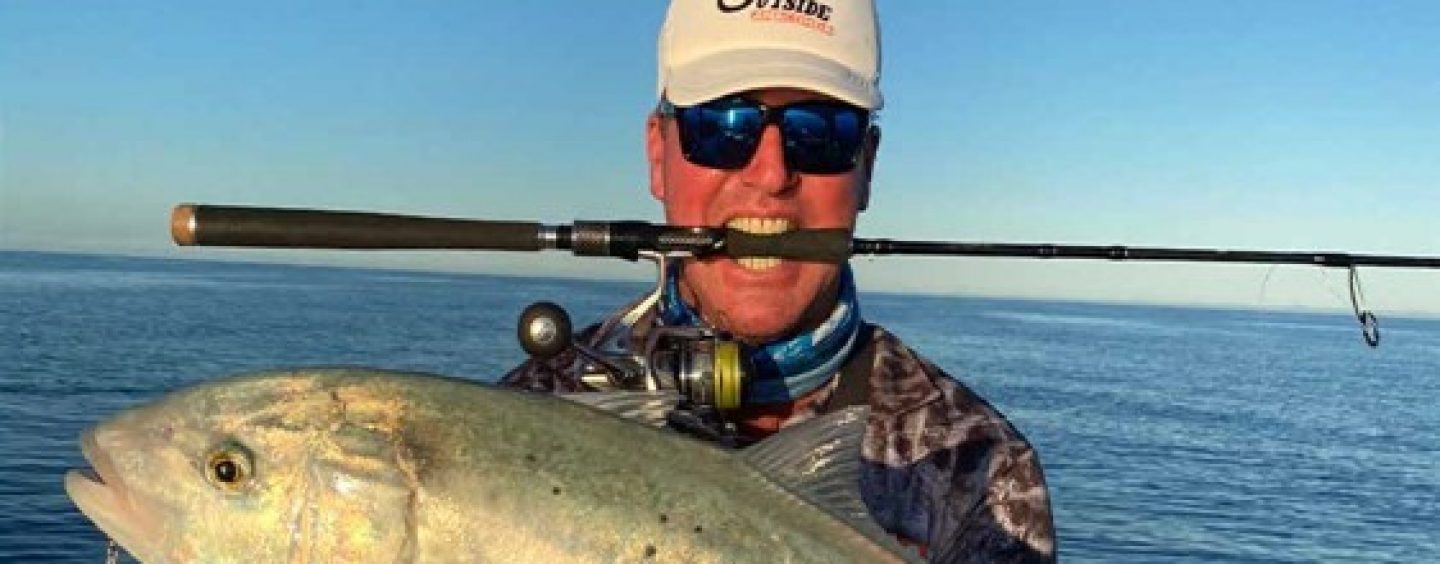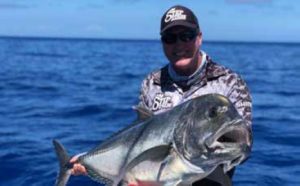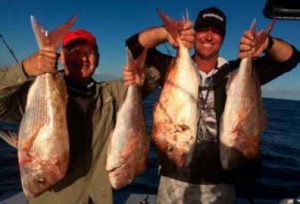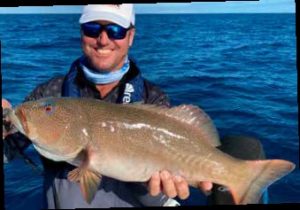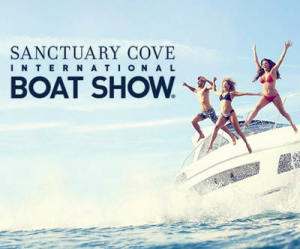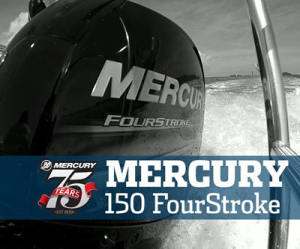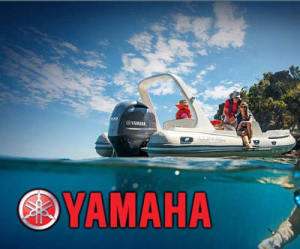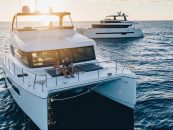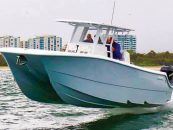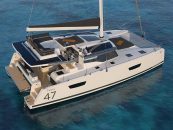The protected waters of Hervey Bay is home to countless schools of trevally
If you’re an angler or boatie, I pose the question to you, what’s your passion… fishing or boating, what’s your favourite…sportfishing or leisure and what do you really prefer, comfort in size but stuck in the same old area or the ability to travel with your pride and joy attached to the back of your truck?
What if you could combine all of comfort, size, style and towability?
Clearly, it’s a decision that needs to be addressed if you’re coming to the Sanctuary Cove International Boat Show to check out over 300 boats being displayed on the water and more than 400 on trailers throughout the precinct.
If you’ve had experience with both types then you’ll know each has their own benefits, but when the fish are biting elsewhere, I prefer the trailer option. There’s an abundance of new boats on the market, with new designs, different materials, incredible workmanship, style, comfort, and more for those wanting a bit of everything.
Plate boats have come along way offering craftsmanship and safety when on the open waters. This stylish vessel is an Extreme Boat built in New Zealand.
Fibreglass-hull trailerable boats are sleek and stylish, ideal for fishing.
Whether it’s a superbly crafted imported boat or a locally built fibreglass boat designed for local conditions, there’s a boat to suit your needs. Suzuki outboard engines with Lean Burn Technology use far less fuel than competitors over the entire rev range, allowing you to cover much more ocean.
The eastern seaboard houses the most dangerous and unforgiving coastal bars in Australia, and the wrong vessel can put you and your crew in danger, along with your favourite fishing gear. 40 minutes south of the Gold Coast lies Brunswick Heads, a quiet coastal community and port to some of the best fishing Northern New South Wales has to offer. The Brunswick River stretches from the ranges in the west to the formidable Brunswick Heads Bar at its mouth, which has seen many overturned boats and loss of crew.
Fishing out of ‘Brunny’ needs suitable preparation. It is vital to do your homework on the tides, size and direction of the swell, wind speed and, of course, whether the fish are biting.
The local reefs north of the bar through May and June see snapper coming in so close that you can literally troll them up in around 20 metres of water using diving lures such as the Nomad DTX 100/120mm in Sardine colour. Further out to sea the 36-fathom line also sees plenty of snapper schooling and larger soft plastics like the Gulp range of 7” Nemesis, 6” Grubs or even the Squid Vicious range prove to be very successful.
L to R: Giant trevally or GT’s grow to enormous sizes on the offshore reefs east of Bundaberg. Snapper fishing on the close grounds east of Brunswick Heads. Giant cobia or black kingfish are often found around bait balls and schools smaller Trevally throughout Hervey Bay.
The current running at the time will determine the weight of the jig head to use: . oz, . oz, 1oz, matched with a 5/0 or 6/0 hook will generally suffice. I like the TT range of HeadlockZ HD as they lock the plastic onto the shaft of the hook quite well stopping the fish from ripping the lure down. Anaconda stores carry a wide variety of these lures and jig heads.
Use of rods and reels is a personal preference. I think the Shimano is awesome. It’s smooth and reliable. A Jewel or Grappler Rod in PE2 or 3 matched with a Stradic SW 6000XG or the Stradic SW 8000PG spin reel is ideal. As for line, Ocea 8 Braid is much stronger and only half the thickness of normal braid … that’s right … half the thickness.
In fact, we use Ocea 8 PE 3 in depths of over 300 metres (1000 feet) jigging 700-gram knife jigs for giant bass groper. Simply outstanding.
Brunswick Heads is close enough to take your moored boat out of a marina on the Gold Coast and head south, but what if the fish are biting off Rainbow Beach 300 kilometres to the north? The fishing out of Rainbow is next level. In addition to Brunswick’s snapper, pearl perch, cobia, kingfish and mulloway, Rainbow hosts tasty red fish like red emperor, scarlet sea perch/paddle tail or largemouth nannygai, coral trout, and a whole variety of colourful and tasty bottom demersal species. Rainbow has a much wider coastal bar to navigate. It can push a pressure wave up anywhere throughout the 2-kilometre plus crossing. Local knowledge helps with all coastal bars, but Rainbow’s needs extra attention to understand the tides, swell, wind, and currents before making the journey north. Also, make sure your boat and gear insurance are up to date. Having an issue then realising you’ve let it expire will be expensive. I have been with Nautilus Marine Insurance for over ten years now and never had a problem and trust me, we head to some pretty wild places and, yes, accidents do occur. The Nautilus team is awesome, not only covering boats but also motorbikes and caravans. They’re more than happy to answer any questions you have plus there’s an office in Brisbane.
L to R: When filming finishes it’s time for all the crew of Step Outside to wet a line. The coral trout is one of the tastiest fish the reef has to offer. This large mouth nanygai took a Storm Gomoku jig whilst fishing the waters north east of Fraser Island.
The reefs east and northeast of Rainbow Beach start off in close with bombies dotting the ocean floor all the way out to the shelf. Quite often on the way out to one reef you’ll drive over several others that may not have been fished at all – mainly because these bombies are quite small. But don’t be surprised if these smaller lumps often hold monster fish. Like all reefs, locating bait is the key to catching quality fish and once you hit the wider shelf grounds around the southern end of Fraser you’re heading into quality bar cod country and here electric reels become a necessity. My go to is the Shimano electric 8000Beastmaster matched to the Status bent butt rod. With a spooled 1000 metres of 37kg or 80lb Power Pro Depth-Hunter Braid and a series of 8/0 tuna circles on the custom made 400lb paternoster rig on the end, you’re nearly ready to go. As always, the weight will depend on the current running at the time but, given you’re fishing super deep water, 2 to 4kgs of lead is normal.
For bait, something that stays on is best. Forget using pilchards here, you need a bait that makes the fish biting want to keep coming back, so I suggest strips of mullet fillets or large pieces of squid. Oh, and don’t forget the lumo tube around the eye of the hooks and a deep drop LED flashing light in blue which should be attached to the top of the 2-metre long paternoster rig.
L to R: Gordon from Garmin and Paul enjoying a filming session on the mahi mahi. The hard fighting spangled emperor (spango) caught off 1770 on squid.
Let’s look at the other side of the coin now. A boat in the marina generally is too big to be towed, but it offers more comfort when travelling out to sea, and you can take a few more people onboard. The fuel bill might be higher, but you can fish in luxury and possibly have a snooze after pulling that fish in. There are many points to consider when choosing whether to buy a trailer or moored boat. Personally, I like to be mobile and there’s lots boats out there that’ll give you the ride of your life in style and comfort.
See you at the Sanctuary Cove International Boat Show and be sure to come up and say g’day!
Published in print April-June 2024

